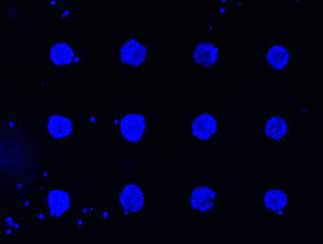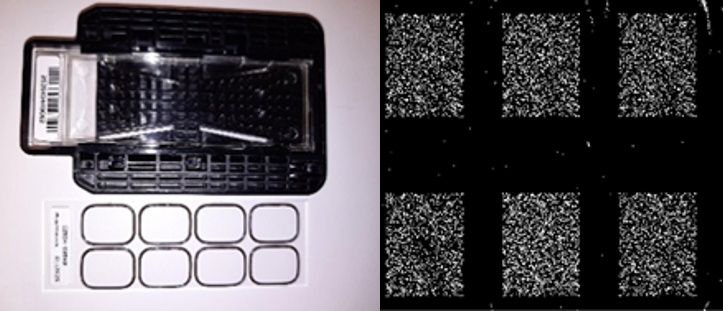Micro-spotter (protein spotting on surfaces)
Nano to Micro/Macro (2D/3D bio-printing)
In this type of non-contact printing device, a piezoelectric transducer is used to create a drop. The transducer creates a volumetric change in the fluid, resulting in pressure waves travel to the orifice and are converted to fluid velocity, that results in the ejection of a drop. The instrument precisely and accurately dispenses sub-nanoliter volumes of liquid at a defined position. The X-Y-Z stage allows for deposition on a defined substrate with high precision and consistency. Arrays of probes can be printed in a quantified manner, with a high reproducibility from spot to spot and substrate to substrate.
On the contrary to micro-contact printing technique, the accuracy of the deposition is not affected by how the fluid wets the substrate. Thus the sample source cannot be contaminated by the substrate or the already deposited material. It then allows the multiple printing of spots using different reagents.
This instrument is broadly used for DNA and protein arraying applied to biosensor technology.

Instruments datasheets




